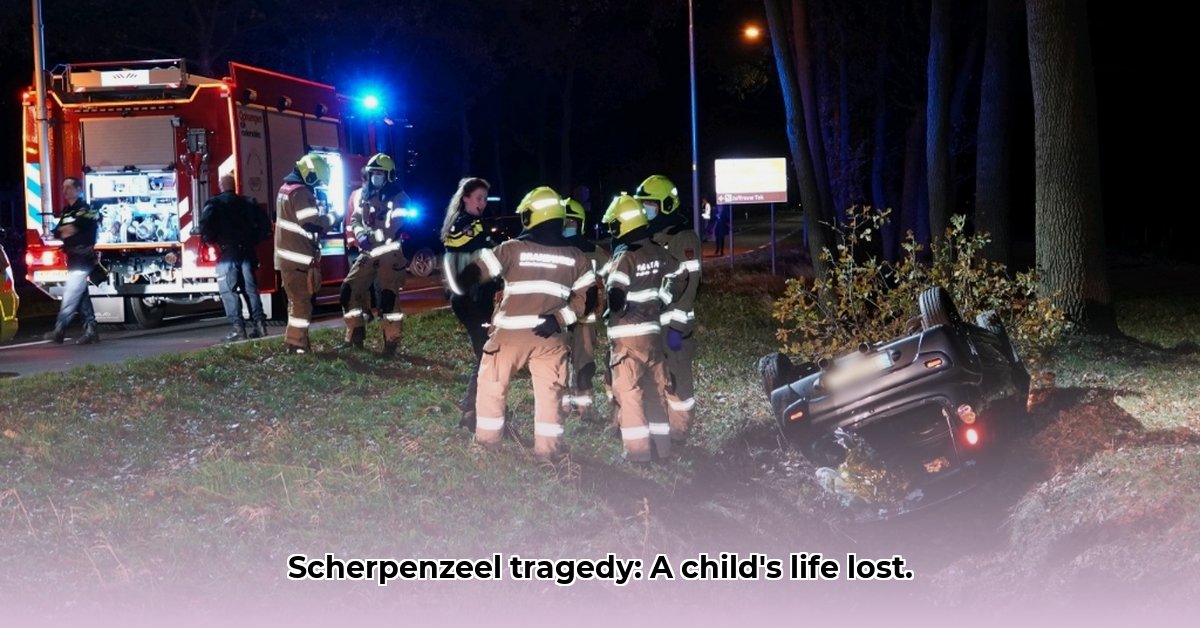
Scherpenzeel Ongeval: A Young Life Lost
A devastating accident near Scherpenzeel on Friday, June 21st, 2025, claimed the life of a young child. The incident occurred near De Kleine Haar and involved a small shovel. Emergency services responded swiftly, but tragically, the child could not be saved. The community is in mourning, and a thorough investigation is underway to determine the exact circumstances leading to this heartbreaking loss. The age of the child (described only as "minderjarig") has not yet been publicly released by authorities.
This tragedy raises critical questions about safety protocols and supervision in the area. The incident is affecting everyone deeply, prompting a thorough investigation into the circumstances and what steps need to be taken to prevent similar incidents. Many are asking, how could this happen? What safety measures were in place? Was there adequate supervision? The answers to these questions are vital, not only for the grieving family but for the entire community.
Uncovering the Truth: The Ongoing Investigation
The investigation is comprehensive and involves several key steps:
Witness Statements: Police are meticulously gathering statements from anyone who may have witnessed the accident, however minor their observation may seem. Every detail is crucial in reconstructing the events.
Scene Reconstruction: Forensic experts are carefully examining the accident site, taking measurements, photographs and creating a 3D model to understand the sequence of events leading to the tragedy. This detailed reconstruction will aid in pinpointing the exact cause of the fatal accident.
Mechanical Inspection: The shovel involved in the accident is undergoing a thorough mechanical inspection to identify any potential malfunctions or defects. Experts will ascertain if any mechanical failure contributed to the accident.
Post-Mortem Examination: A post-mortem will determine the precise cause of death and provide further crucial information to the investigation. The results will be vital in understanding the full details of the incident.
The investigation aims not only to determine the facts but also to identify any negligence or areas where safety protocols need improvement.
Moving Forward: Collective Action for Enhanced Safety
This tragedy highlights the need for collective action to prevent future incidents. Several key stakeholders must collaborate:
Law Enforcement: The Police need to meticulously complete their investigation, making sure there’s a clear understanding of what happened and whether any charges are warranted. Following the investigation, a review of existing machinery and child safety regulations should follow.
Local Authorities: The local government needs to provide substantial emotional and practical support to the bereaved family; and also ensure the information released to the public is carefully managed and sensitive in nature. Initiatives to raise public awareness of safety around machinery should also be a priority.
The Child's Family: The family will require ongoing emotional support, possibly legal assistance, and long-term grief counseling. The trauma of this event will undoubtedly have a lasting effect.
Landowners: (Where applicable) Landowners need to fully cooperate with the investigation and critically review their own safety protocols. This might involve implementing stricter measures to ensure the safety of children and others on their property.
These actions are crucial to ensuring a safer environment for everyone. The investigation will require time, and the healing process for the family and community will be long.
Preventing Future Tragedies: A Call for Enhanced Safety Measures
The Scherpenzeel ongeval serves as a stark reminder of the inherent risks associated with machinery and unsupervised access to potentially dangerous environments. This tragedy isn’t just an isolated incident; it’s a wake-up call to improve child safety, especially on farms and in areas with machinery. By taking proactive steps, we can work collectively to prevent similar heartbreaks in the future. A comprehensive approach is essential – combining improved safety protocols, intensified regulation, and enhanced public awareness.
The lack of readily accessible data on child accidents involving machinery highlights a need for more comprehensive data collection and analysis. This will help create accurate risk assessments and targeted preventive strategies. The investigation’s findings will be vital in shaping future safety guidelines. We will continue to update as more information becomes available.